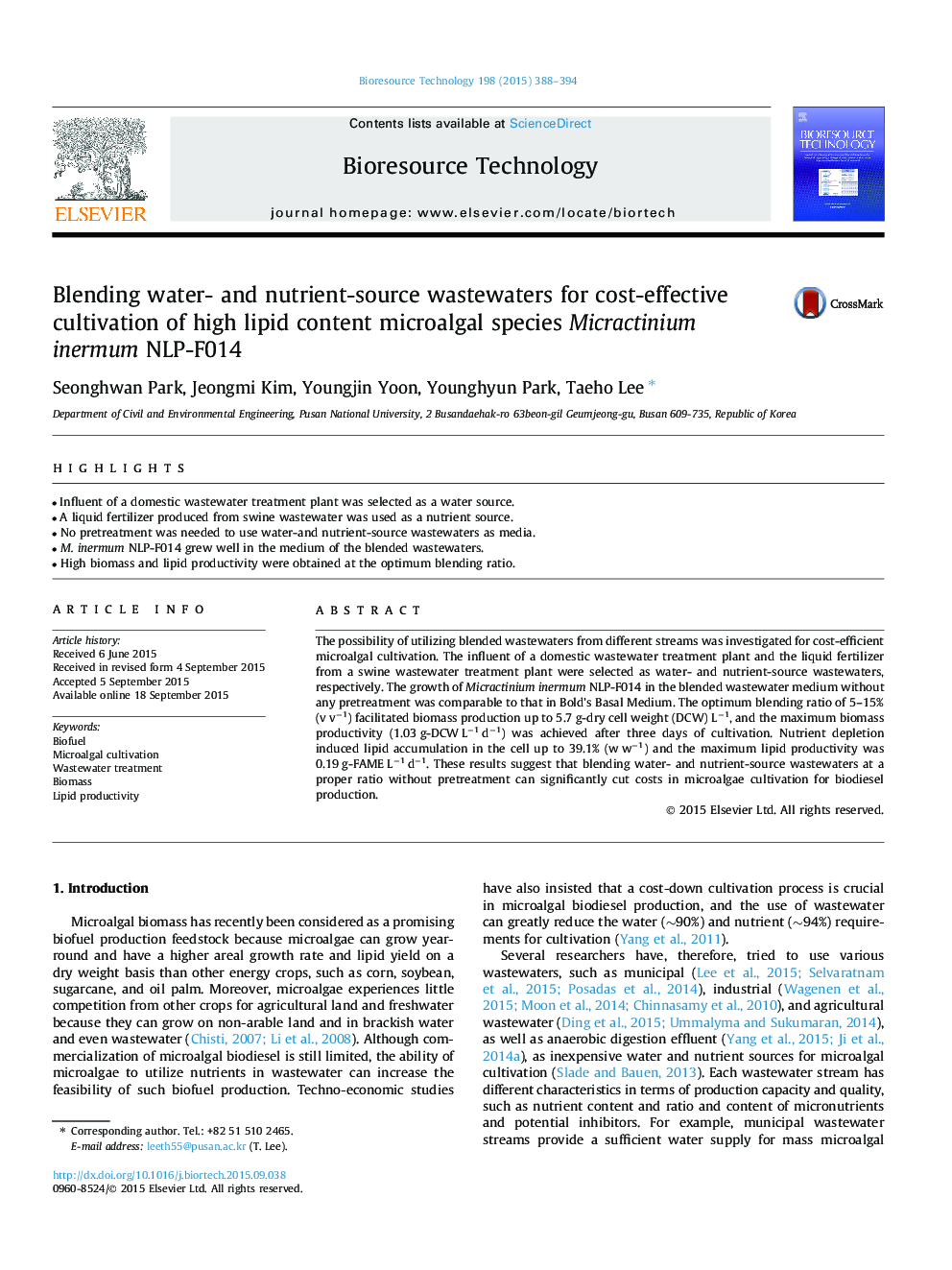| Article ID | Journal | Published Year | Pages | File Type |
|---|---|---|---|---|
| 679469 | Bioresource Technology | 2015 | 7 Pages |
•Influent of a domestic wastewater treatment plant was selected as a water source.•A liquid fertilizer produced from swine wastewater was used as a nutrient source.•No pretreatment was needed to use water-and nutrient-source wastewaters as media.•M. inermum NLP-F014 grew well in the medium of the blended wastewaters.•High biomass and lipid productivity were obtained at the optimum blending ratio.
The possibility of utilizing blended wastewaters from different streams was investigated for cost-efficient microalgal cultivation. The influent of a domestic wastewater treatment plant and the liquid fertilizer from a swine wastewater treatment plant were selected as water- and nutrient-source wastewaters, respectively. The growth of Micractinium inermum NLP-F014 in the blended wastewater medium without any pretreatment was comparable to that in Bold’s Basal Medium. The optimum blending ratio of 5–15% (v v−1) facilitated biomass production up to 5.7 g-dry cell weight (DCW) L−1, and the maximum biomass productivity (1.03 g-DCW L−1 d−1) was achieved after three days of cultivation. Nutrient depletion induced lipid accumulation in the cell up to 39.1% (w w−1) and the maximum lipid productivity was 0.19 g-FAME L−1 d−1. These results suggest that blending water- and nutrient-source wastewaters at a proper ratio without pretreatment can significantly cut costs in microalgae cultivation for biodiesel production.
